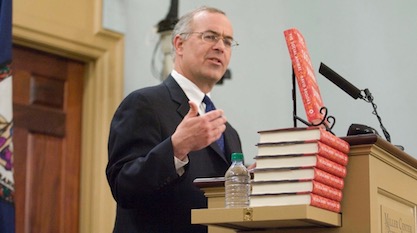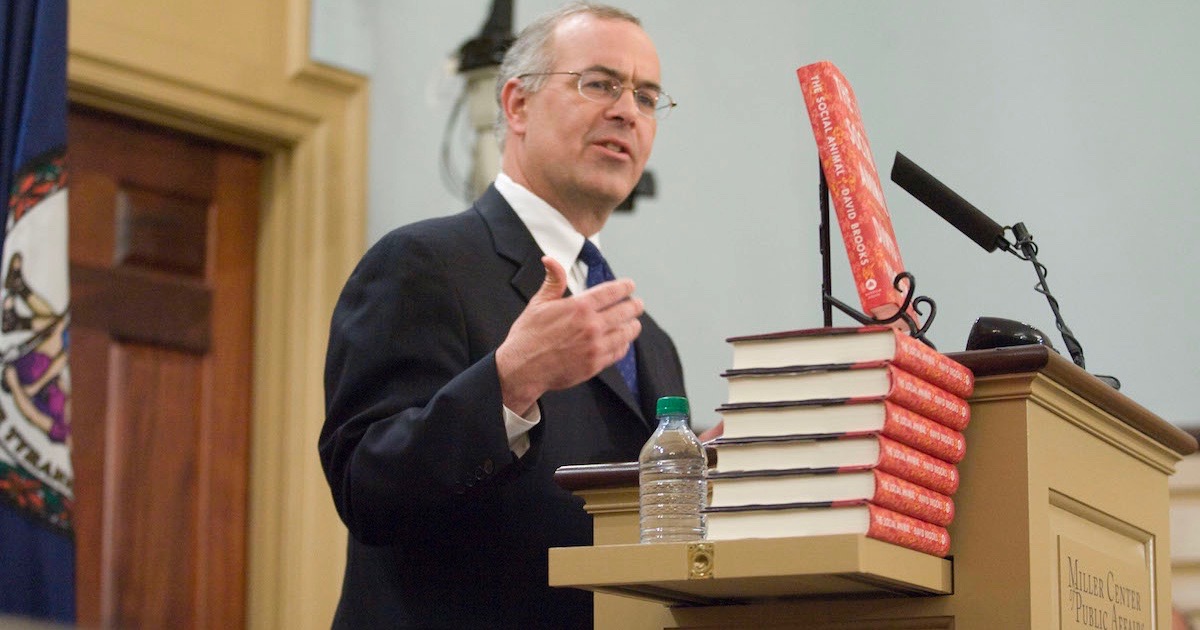 Culture & Ethics
Culture & Ethics
 Medicine
Medicine
David Brooks Forgets to Oppose Some Suicides


In his New York Times column, the well-meaning David Brooks urges us to prevent suicide. The crisis is certainly real. From “How to Fight Suicide”:
You’ve probably seen the recent statistics about the suicide epidemic — that suicide rates over all have risen by over 30 percent this century; that teenage suicides are rising at roughly twice that rate; that every year 45,000 Americans kill themselves.
And yet we don’t talk about it much. It’s uncomfortable. Some people believe the falsehood that if we talk about suicide, it will plant the idea in the minds of vulnerable people. Many of us don’t know what to say or do.
Indeed. Brooks argues that preventing suicide is a “collective task,” for which we are all responsible. We need to “help people cope,” he writes. Absolutely true. He then writes about the broader problem:
Suicide is a societal problem. It’s strongly associated with social isolation. Men die at higher rates than women, single people more than married people, rural people more than urban people, Native Americans and whites more than blacks or Latinos.
It’s also a values problem. Our individualistic culture means there are vast empty gaps in our social fabric where people suffer alone and invisible. It’s also a guns problem. A lot of people die simply because at their lowest moment, there happened to be a gun around.
The Shallow Water
That’s fine as far as it goes. But like so many others opposing suicide in the contemporary cultural milieu, Brooks remains in the shallow water by failing to grapple with the ubiquitous promotion of suicide we see all around us — including in his own damn paper, which has editorialized in favor of doctor-assisted suicide, favorably reported on other suicides, and even extolled euthanasia parties!
Assisted-suicide advocates will be yelling right about now that assisted suicide isn’t really suicide but rather “medical aid in dying.” Bah! That’s a gooey euphemism. Intentionally overdosing oneself with poison prescribed by a doctor is to kill oneself, which, of course, is the definition of suicide.
Some will say that assisted suicide is not the same because, as Brooks writes, often the “pain is temporary” and people who fail in their attempt are later glad to be alive. But studies show that people who want to kill themselves because of a terminal diagnosis also benefit greatly from suicide prevention — usually denied these days to patients requesting assisted suicide. Later, these once suicidal patients too may be very glad to still be alive. Indeed, I have met such people.
Some will say that assisted suicide is not the same because people who do themselves in via prescribed poison want to live — but can’t, because of their illness, and so ending it isn’t about suicide but stopping the pain. But people who kill themselves because of, say, the death of a child, feel the same way. Indeed, their suffering may be far more severe, less subject to amelioration, and last far longer than that of the dying person. They too would want to live but for the intervening cause.
“On Their Own Terms”
Some will say that we should let people die “on their own terms” when they have a terminal illness. There is even a movement within the mental-health professions to permit “rational suicide.” If it is proper for some to “die on their own terms,” why not everyone with decision-making capacity?
Moreover, the assisted-suicide movement explicitly promotes some suicides but also sends to people not targeted by the movement — those who want to die for reasons other than illness or disability — the insidious message that suicide is a proper and acceptable solution to their suffering too. Indeed, 0ne study found that legalization of assisted suicide “leads to increased inclination to suicide in others.” (This is a very important issue requiring far more analysis than it has received to date.)
Opposing suicide is compassionate and validates the intrinsic value of human life. But to be effective — and to avoid the creation of a two-tiered society where some suicides are impeded and others facilitated — we must seek to prevent all suicides. I don’t think we will reverse the tide about which Brooks is so concerned until we approach the crisis with that understanding.
Photo: David Brooks, by Miller Center Forum, via Flickr.
Cross-posted at The Corner.
